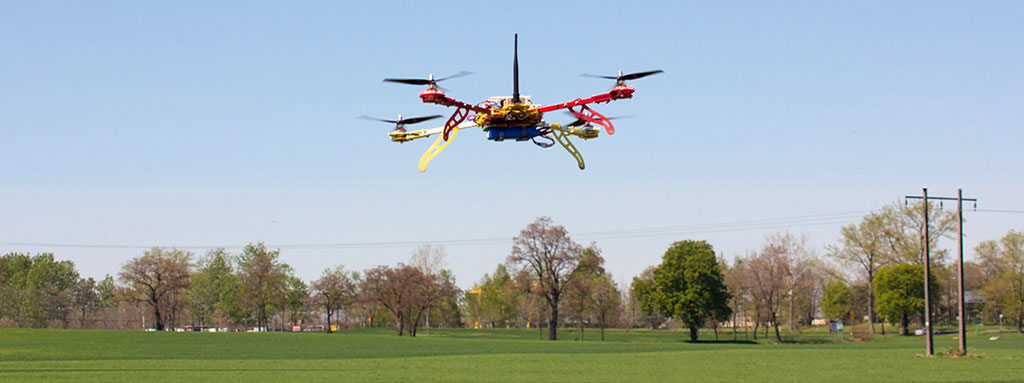In a previous post of this blog (“Daily use of UAS”), we have already discussed the urgent need to establish specific regulations applicable to unmanned aircraft or “drones” (as the media continues to call them) and the aerial activities they perform. The legal vacuum surrounding this top-notch sector in many countries stalls its development for civil matters, thus preventing it from exploiting its great economic potential and diminishing these states’ competitiveness as compared to those that have already approached its regulation.
Last 4 of July, the Spanish Government approved a procedure to authorise the operations performed by RPAS (Remotely Piloted Aircraft System) included in Royal Decree-Act 8/2014. This procedure is part of the so called urgent measures for the development, competitiveness and efficiency plan, a package of urgent legislative measures aimed at promoting competitiveness, improving access to financing and encouraging employment in the country. Spain is therefore part of a selected group of countries (not more than 15 and mostly European) that have specific laws to govern this activity.
In France, after two years of regulating the activity, they have more than 600 companies in operation.
It is not at all a definitive regulation. The European Union has been working for several years in a community regulatory framework that is expected to see the light in 2016 and that will integrate these aircraft in the European airspace. However, to guarantee a progressive transition and insofar as this regulatory development moves forward, this provision authorises remotely controlled civil aircraft operations, with the necessary levels of safety, in Spain.
This immediately applicable temporary provision sets the terms in which the activity may be developed, the mandatory technical characteristics of the aircraft and other aspects, such as pilot training and validity of licences. It exclusively deals with the operation of remotely piloted civil aircraft of less than 150 kg of maximum take-off weight (or of more than 150 kg and devoted to conducting fire fighting and search and rescue activities).
According to the wording, air activities with RPAS will be allowed, with certain restrictions, for the development of technical or scientific works and specialised operations, during the day and with good visibility meteorological conditions, always operating outside urban areas or population groups in uncontrolled airspace. In any case, the operator will be in charge of controlling and operating the aircraft who, apart from complying with this provision, will also comply with the rest of the applicable regulations concerning the use of the radio-electric spectrum, data protection or capture of aerial images.
Operation restrictions are established based on the aircraft’s maximum take-off weight (MTOW). A difference is made between aircraft weighing more than 25 kg, between 2 and 25 kg, and less than 2 kg. Aircraft weighing more than 25 kg shall be registered in the Aircraft Licence Registry and have the airworthiness certificate, which shall establish the operating conditions and restrictions thereof. Only the aircraft weighing less than 2 kg shall be able to fly beyond the pilot’s line of sight, provided that it remains within the reach of the radio control station. In any of these cases, the identification of the aircraft during the development of operations by means of a plate attached to the structure including the operating company’s information shall be mandatory.
As to pilots, according to the Royal Decree, a certificate to pilot RPAS issued by an acknowledged training organisation shall be sufficient to operate aircraft weighing less than 25 kg of MTOW. In the case of aircraft with higher MTOW, at least the theoretical part of any pilot licence shall be required, including that of ultralight aviation. Likewise, knowledge of the aircraft, its systems and piloting shall be accredited by means of a certificate issued by an operator o manufacturer.
All RPAS activities shall be reported to AESA, which in case of aircraft with MTOW higher than 25 kg shall issue an express authorisation to operate. The operator, aircraft, pilots and operation shall be informed, in addition to providing the necessary documentation to accredit that the established requirements are being complied with. Among these requirements we find, for example, owning an insurance policy (or other financial guarantee covering civil liability), having the documentation related to the description of the aircraft and the operation manual, as well as having established an aircraft’s flight test and maintenance schedule. Only in severe risk situations or catastrophic events, in order to protect and rescue people and goods, authorised operators may perform, upon the requirement of the authorities in charge, flights that do not fall within these conditions and restrictions
We still have a long way to go. The operations allowed by this new law are still restricted and there is some uncertainty as to its application. What it is beyond doubt is that this provision ends regulatory barriers that were preventing the sector from developing in Spain. AERPAS (Spanish Association of Remotely Piloted Aircraft Systems) itself is optimistic, hoping that this first step favours a climate of stability and trust where immediate investment opportunities may be fulfilled. With the French precedent, where after two years of regulating the activity they have more than 600 companies in operation, we can at least expect that the regulatory process that has just started will bring the final takeoff of the area and the beginning of an important transformation of the Spanish aerospace industry.



